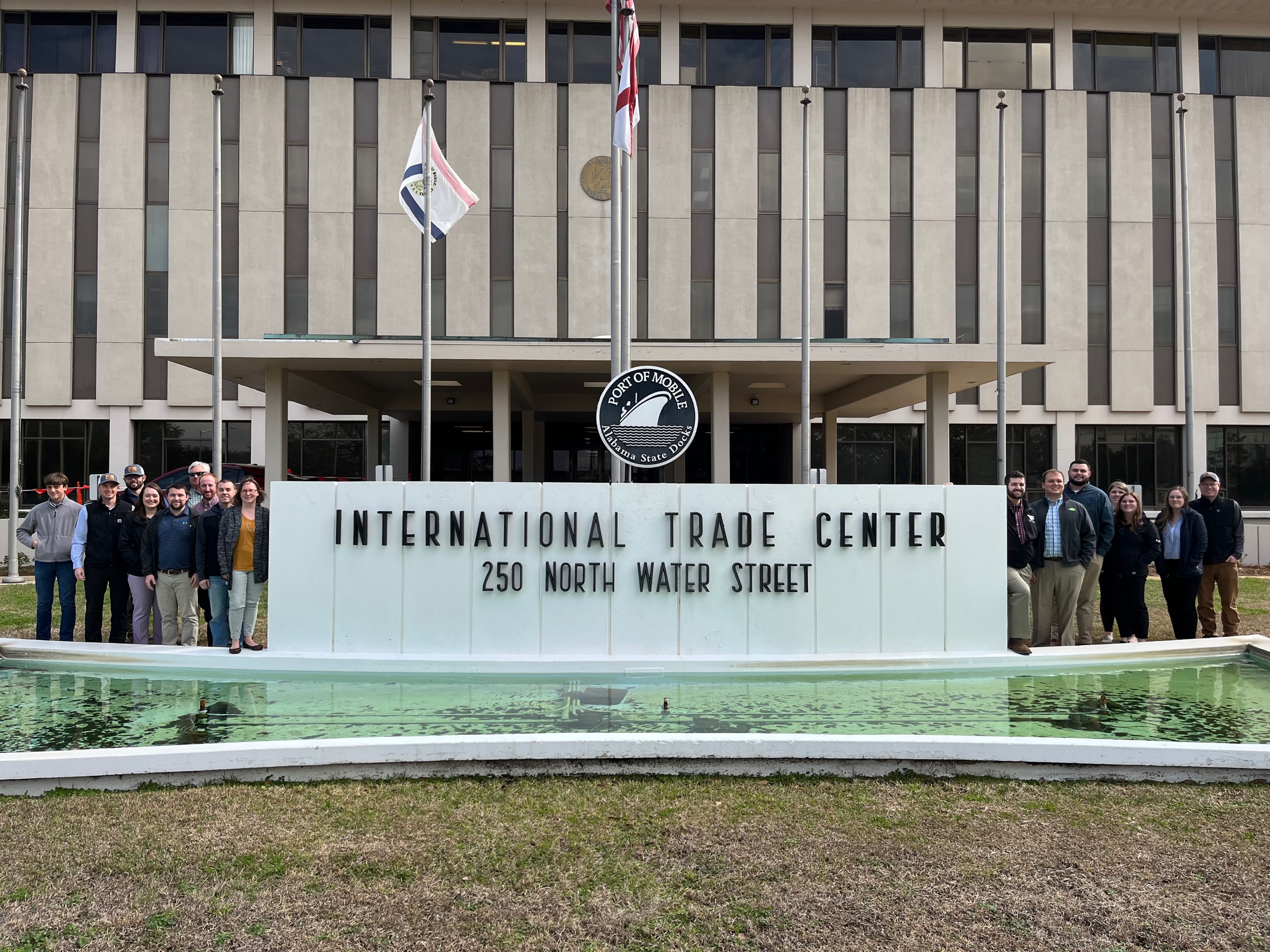Been waiting on a new truck or maybe some lumber for that new pole building?
The 2022-23 ProFILE class may know exactly where they’re at … the Port of Mobile in Alabama.
“Honestly, we didn’t have major disruptions from COVID and we are pretty much fully back to where we were prior to the pandemic,” said Molly Tillman, director of public affairs with the Alabama Port Authority.
“We do have a lot of timber products on the docks that need to get moving and we have a lot of vehicles that have just started moving again. But, for the most part, things are getting back to normal.”
To say seeing the supply literally in action is overwhelming is an understatement as big as the cranes snatching cargo from the Mobile port docks.
And that’s saying something…
“We have four cranes here for containers. Two of them are the second-largest cranes in the world,” Tillman said. “And the other two are the largest cranes in the world.”
Those cranes were in action, dropping cables to containers where mega-magnets attached to the end of a steel beam would latch onto a container not unlike the way the morning’s gossip grabs hold at the local coffee shop.
“Interestingly, I’ve been told the best people for operating these giant cranes are people that are really good at video games,” Tillman said.

The Mobile Port, which served as a kickoff to the third day of the 2023 ProFILE trip, provided participants with an up-close look at just what happens to some of the grain, forest products and poultry that Alabama farmers produce and a real-world glimpse into the impacts of trade agreements and the global nature of agriculture.
“The Mobile port is relatively small in terms of grain. We do about 3.3 million bushels a year, mostly soybeans headed for China,” Tillman said.
The Port of Mobile is a balanced import/export gateway. The Port generates revenue primarily from its metallurgical coal, container, rail, and general cargo operations. By percentage, the Port of Mobile is the fastest-growing container terminal in the U.S.
There’s nothing small about this place. The ships that deliver cars and trucks from Mexico stand about 13 stories tall. Vessels loaded with parts to create AirBus aircraft maneuver into place and roll the makings of an airliner from deck to dock.
The pieces and parts needed for windmills (yes, the kind you see dotting the landscape) lay about like Orion’s Legos and are somehow made to look small, a testament to the scale of the operation.
“Having the opportunity to see one of the country’s largest ports up close really puts into perspective the intricacies of our global supply chain,” said ProFILE student Jason Smith of Newaygo County.
“It just increases my level of appreciation for the infrastructure and investment it takes to experience the level of input availability and market opportunities we have for our crops.”
And, of course, the volume of manpower it takes to prevent this watery dance from turning into a frothing failure is significant.
“Witnessing how busy the port is and understanding how important labor is to the port puts into perspective how quickly lives can change if jobs aren’t filled there,” said Amanda Koch, a ProFILE participant from Calhoun County.
“Agriculture is already a tight-margin business. Relying on the ports to bring us cheaper goods and products to raise crops is essential.”
The port employs approximately one in seven Alabama residents,” said Tillman.
“That accounts for everyone that has some connection to the port whether its directly or indirectly. But we still struggle to find labor. It’s a challenge.”
With the ocean within easy sight, it’s not hard to understand why transport by water is the focus, but the impact of railway transport is nearly as obvious. With dockside tracks prominent throughout the Port’s nearly 300-acre footprint (including roughly three million square feet of warehouse space), the relationship between rail and ocean-going vessel is blatant.
“It’s a very, very important piece of this,” Tillman said. “All of the pieces work together. When one doesn’t work, that’s going to cause issues in others.”
The port features two of the largest rail ferries in the world, traversing between Mobile and Mexico. The ferry system can handle around 10,000 carloads of commodities annually and, perhaps just as important, it can do it in nearly half the time of previous methods.
“They cut down the time it would be on rail from 5 days to 2.5 days,” Tillman said. “And they reduce carbon emissions significantly as well.”
Security, as one would expect, is guitar-string-tight. All tour participants were required to stay on the bus and multiple checkpoints are in place and you won’t get through without an authorized escort or a valid Transportation Worker Identification Credential.
The majority of the ships docking at the port are international. Those are met outside the port by a designated pilot who boards the vessel and takes control to bring the ship into port. International crew members are not allowed to leave the vessel at any time.
Share Story
Article Tags


